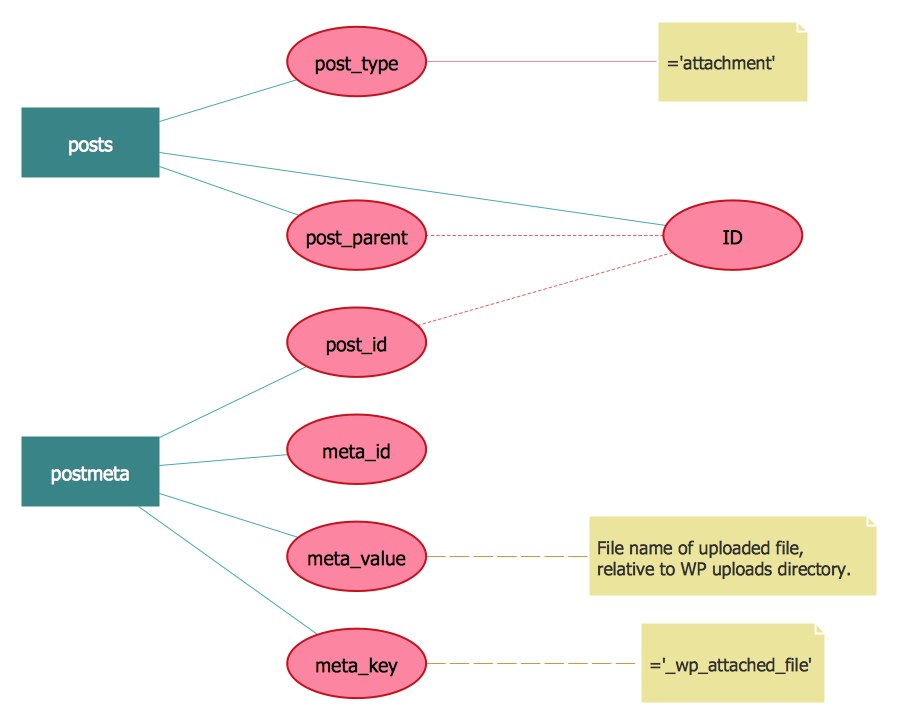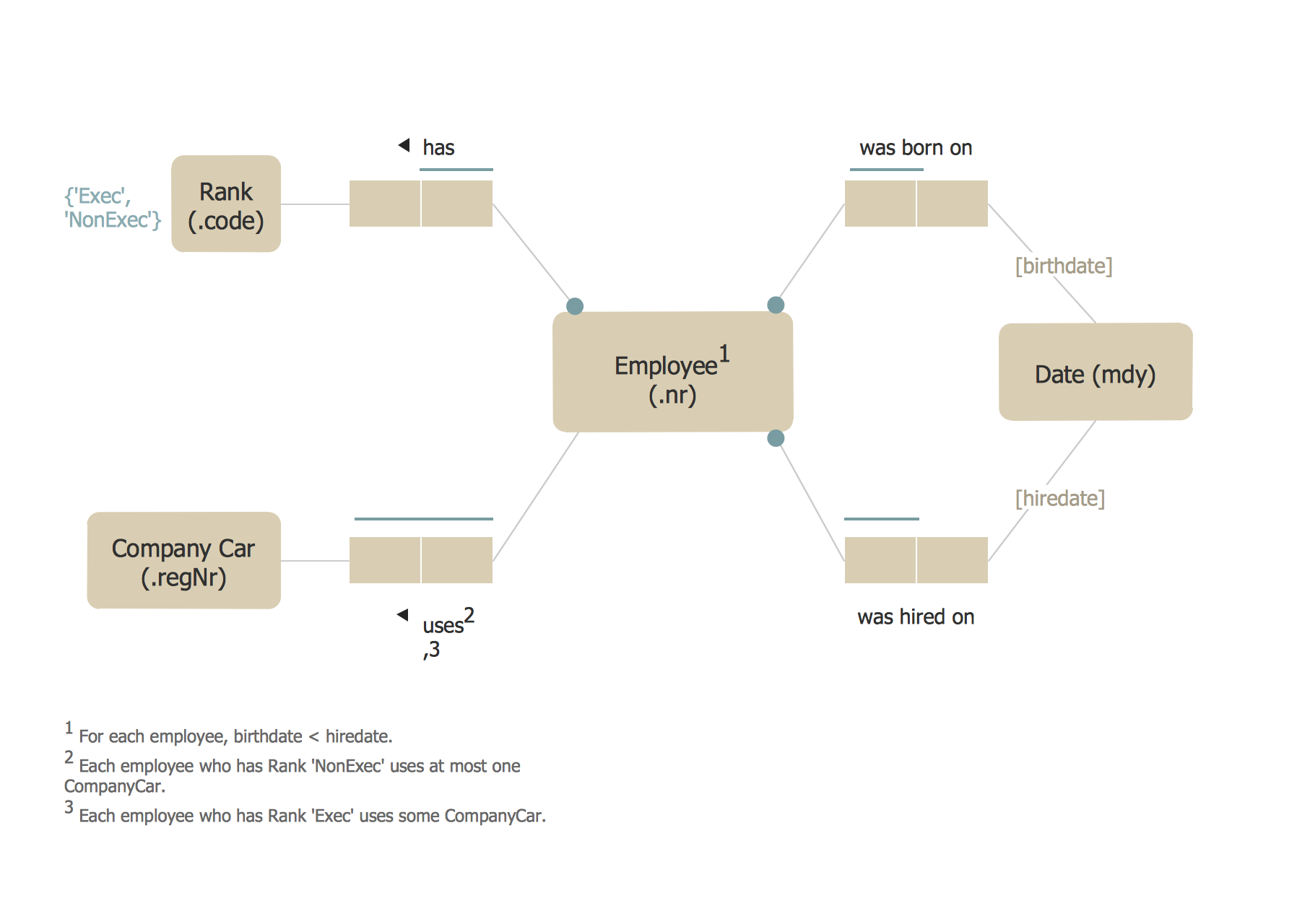Entity-Relationship Diagram (ERD) with ConceptDraw DIAGRAM
Entity-Relationship Diagram (ERD) is applied for detailed description of structures and high-level (conceptual) design databases using the Chen's and Crow's Foot notations. An ERD represents a diagram constructed mainly of rectangular blocks (for entities, data) linked with relationships. The links between the blocks are used to describe relations between the entities. There are three types of relationships: one-to-one, one-to-many, and many-to-many. Use the specialized ERD software - ConceptDraw DIAGRAM to create the Entity-Relationship Diagrams (ERDs) of any degree of complexity with Chen's and Crow's Foot notations. Draw them easily applying the powerful built-in tools and libraries of predesigned ERD vector objects from Entity-Relationship Diagram (ERD) solution from the Software Development area of ConceptDraw Solution Park. You can also start with one of ready template or sample included to this solution. Designing the ERDs in ConceptDraw DIAGRAM you can easy move the objects within a diagram with saving the relationships between them.
 Entity-Relationship Diagram (ERD)
Entity-Relationship Diagram (ERD)
Entity-Relationship Diagram (ERD) solution extends ConceptDraw DIAGRAM software with templates, samples and libraries of vector stencils from drawing the ER-diagrams by Chen's and crow’s foot notations.
 Fishbone Diagram
Fishbone Diagram
Fishbone Diagrams solution extends ConceptDraw DIAGRAM software with templates, samples and library of vector stencils for drawing the Ishikawa diagrams for cause and effect analysis.
ORM Diagram
The vector stencils library ORM Diagrams from the solution Software Development contains specific ORM symbols for ConceptDraw DIAGRAM diagramming and vector drawing software. The Software Development solution is contained in the ConceptDraw Solution Park.
 Business Process Diagrams
Business Process Diagrams
Business Process Diagrams solution extends the ConceptDraw DIAGRAM BPM software with RapidDraw interface, templates, samples and numerous libraries based on the BPMN 1.2 and BPMN 2.0 standards, which give you the possibility to visualize equally easy simple and complex processes, to design business models, to quickly develop and document in details any business processes on the stages of project’s planning and implementation.
- Data Flow Diagrams
- ER Diagrams with ConceptDraw PRO | Organizational Structure ...
- How to Draw an Organization Chart | Organizational Structure | ER ...
- Organizational Structure | How to Draw an Organization Chart ...
- Organizational chart software
- Business diagrams & Org Charts with ConceptDraw PRO ...
- ConceptDraw PRO The best Business Drawing Software ...
- Engineering | Entity Relationship Diagram Software Engineering ...
- Organizational Structure | Business Processes | ConceptDraw PRO ...
- Data Flow Diagrams | ER Diagrams with ConceptDraw PRO ...
- Building Drawing Software for Design Office Layout Plan | Business ...
- Examples of Flowcharts, Org Charts and More | How to Draw an ...
- Organizational Structure | How to Draw an Organization Chart ...
- ConceptDraw PRO The best Business Drawing Software | UML ...
- Simple & Fast Diagram Software | Create Block Diagram | Pyramid ...
- Workflow Diagram Software Mac | Diagramming Software for Design ...
- How to Draw an Organization Chart | Organizational Structure ...
- Organizational Structure | Business diagrams & Org Charts with ...
- Data structure diagram with ConceptDraw PRO | Program Structure ...
- Data structure diagram with ConceptDraw PRO | ConceptDraw PRO ...

